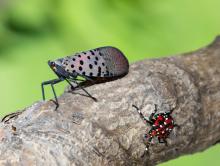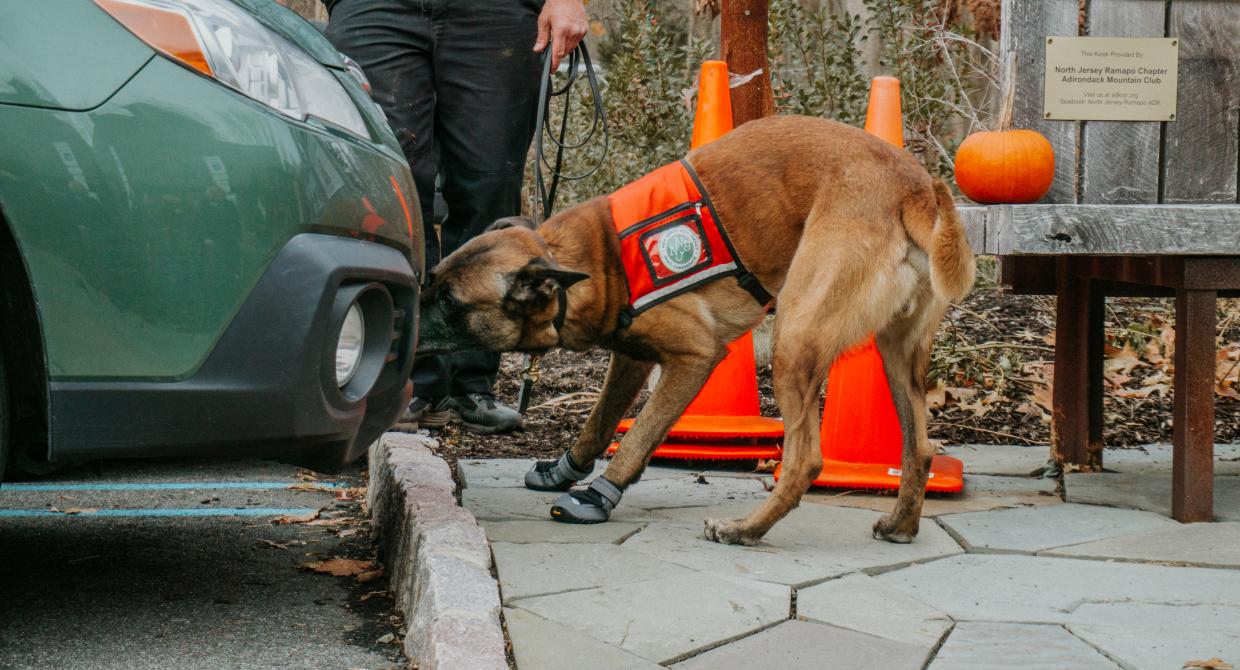
Conservation Dogs Partnership Tackles Lanternfly Issue
Title

Body
As the invasive insect spotted lanternfly (SLF) encroaches closer to New York’s forests and agriculture, state agencies have made finding and intercepting this destructive species a priority.
Early detection and elimination of SLF infestations is critical to preventing agricultural damage and degradation of natural areas. Detecting populations while they are still small and not yet established would not only reduce the overall negative impacts of SLF, but also the cost of damages and management.
To address this urgent issue, many innovative tracking methods—including the use of drones, environmental DNA (eDNA), and conservation detection dogs—have been developed to bolster traditional search strategies. But how effective is the use of detection dogs compared to other methods? That’s what the Trail Conference Conservation Dogs program, New York State Department of Environmental Conservation (NYS DEC), Working Dogs for Conservation, and researchers from Cornell University want to find out.Our Conservation Dogs program successfully trained our two dogs, Dia and Fagen, to detect spotted lanternfly adults in summer 2019. Since then, our team has been advancing the dogs’ training, integrating different life cycles of the insect pest, as well as several possible search locations.
Researchers from Cornell’s natural resources and entomology departments have partnered with the Trail Conference, NYS DEC, and Working Dogs for Conservation to tackle the SLF issue. This group of collaborators has recently been awarded one of seven grants through the Cornell Atkinson Center for Sustainability.
In its 13th year, the Atkinson Venture Fund (AVF) has awarded over $1.1 million to highly innovative and collaborative projects. By supporting projects that emphasize cross-disciplinary collaboration and innovation, AVF may help establish the viability of some unproven research ideas so that they can receive funding from external sources in the future.
Our project will focus on quantifying the potential of using dogs to detect spotted lanternfly egg masses in one of the highest-risk agricultural settings: vineyards. Researchers will be using the data collected by the Conservation Dogs program and human searchers to create an occupancy model. This model will estimate how likely SLF is to be found in a given location and how likely a dog versus a human is to find it.
Overall, the study will evaluate where SLF is expected to be found in a given location and how conservation detection dogs can be used for early detection of SLF under different environmental factors. The hope is that the results of this study will provide state agencies with tools to choose the best search methods for SLF. Not only that, but the Conservation Dogs program believes this study will lay the groundwork for future use of the conservation detection dog method for the early detection of other detrimental insect species.
How to Identify Spotted Lanternfly
Click here to watch a video about how to identify spotted lanternfly in its various lifecycles and how to remove egg masses.
How to Report Sightings
If you think you’ve seen a spotted lanternfly or an egg mass, please send a picture and GPS location to spottedlanternfly@dec.ny.gov in New York or SLF-plantindustry@ag.nj.gov in New Jersey.
Follow the work of our Conservation Dogs team on Instagram: @DiaSavesTheForest.
